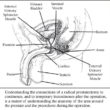Factors in the adoption of active surveillance for low-risk prostate cancer
This study explores the use of active surveillance for patients with low-risk prostate cancer (LRPC) in

© Dan Oldfield
Northern Italy. Active surveillance is a treatment strategy where patients are closely monitored
instead of receiving immediate, aggressive treatment such as surgery or radiation. The goal is to avoid overtreatment and its associated risks unless the cancer shows signs of progressing.
The study was conducted between 2015 and 2021 across multiple urology and radiation oncology centers. It included 852 men with a new diagnosis of low-risk prostate cancer. Each patient was informed about the pros and cons of active surveillance and radical treatments. Those choosing active surveillance underwent regular monitoring with prostate-specific antigen (PSA) tests and biopsies.
The results showed that 706 patients (83%) chose active surveillance, while 146 opted for immediatetreatment—109 for surgery and 37 for radiation. Over time, more patients chose active surveillance.
Factors that influenced this choice included the patient’s age (older patients were more likely
to choose surveillance), health status, and the involvement of multidisciplinary teams in treatment decisions. Additionally, patients whose initial biopsy was reviewed by an independent pathologist were more likely to choose surveillance.
The study found no difference in overall survival between patients who chose active surveillance and those who received immediate treatment. Among those on active surveillance, 47% remained treatment-free after four years.
The authors concluded that with proper education and a structured approach, more patients with low-risk prostate cancer can successfully opt for active surveillance, which helps avoid unnecessary treatments without compromising their long-term health outcomes. This approach was largely underutilized before the study but proved effective in increasing its adoption.
Ciccone, G, et al doi:10.1001/jamanet workopen.2023.38039







